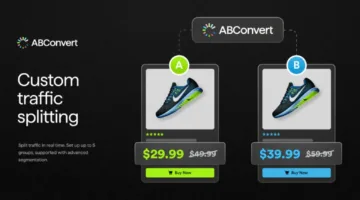Photo by Team TGM
Are you dreaming of starting your online store but unsure where to begin? I’ve been there! When I first explored Shopify, I had zero coding knowledge and was overwhelmed by choices. But guess what? Shopify makes the process incredibly smooth—even for beginners.
In this article, I’ll walk you through each step of building your Shopify store from scratch, sharing insights as if we’re figuring it out together.
Table of Content:
Why Choose Shopify?
Shopify is more than just an eCommerce platform—it’s your complete business toolkit. Whether you’re a small business owner, solopreneur, or a growing team, Shopify gives you everything you need to sell online, offline, and everywhere in between.
Key Benefits:
- Beginner-friendly drag-and-drop editor
- Secure hosting and PCI-compliant checkout
- Customizable themes and 8,000+ apps
- Integrated payments, marketing, and shipping
- Great for B2C, B2B, and Retail (more on this below)
TechRadar reports Shopify remains the top choice for dedicated e-commerce—designed entirely around selling online Zoko+5Avada+5NOIR BLANCO+5 TechRadar Tom’s Guide+3TechRadar+3TechRadar+3.
Shopify Pricing
Shopify offers flexible pricing depending on your business size and needs. Here’s a breakdown of the current global pricing structure:
| Plan | Best For | Price/Month (USD) | Key Features |
| Basic | Solo entrepreneurs | $39 | Online store, 24/7 support, up to 1,000 inventory locations |
| Shopify | Small to mid-sized teams | $105 | 5 staff accounts, professional reports, standard features |
| Advanced | Scaling businesses | $399 | 15 staff accounts, advanced reports, lower transaction fees |
| Plus | Enterprises | Starts at $2,300 | Custom setup, unlimited staff, advanced B2B features, high-volume checkout |
Trial Offer: $1/month for the first 3 months on Basic, Shopify, and Advanced plans.
Sell Your Way: Shopify Store Types
Shopify isn’t one-size-fits-all. Depending on your business model, choose your route:
B2C (Business to Consumer)
Perfect for fashion, accessories, home goods, etc.
- Eye-catching storefronts
- High-converting checkout
- Full customization of front and backend
B2B (Business to Business)
For wholesalers or enterprise buyers
- Self-service buying
- Bulk pricing and purchase orders
- Personalized customer experiences
Retail (POS Offline Selling)
Combine your physical store with your online store
- Unified customer view
- POS hardware synced inventory
- Ideal for boutiques, supermarkets, and more
Step-by-Step Guide to Creating Your Shopify Store
Let’s dive into the exact steps to set up your store.
Step 1: Sign Up for a Shopify Account
- Go to www.shopify.com
- Click on Start Free Trial
- Enter your email address, password, and store name
- Answer a few setup questions (e.g., whether you’re already selling)
That’s it—you’re now inside your Shopify dashboard!
Step 2: Explore the Shopify Dashboard
Once signed in, take a few minutes to explore the dashboard.
Here’s what each section means:
- Home: Quick overview and tips
- Orders: View and manage your customer orders
- Products: Add and manage your items
- Customers: See customer profiles and history
- Online Store: Customize your website
Settings: Control payments, shipping, and more
Step 3: Choose a Shopify Theme
Your store’s design starts with a theme.
- From the dashboard, go to Online Store Themes
- Click Explore Free Themes or Visit Theme Store
- Choose one that fits your brand
- Click Try Theme and then Publish
Step 4: Customize Your Store Design
- Go to Online Store Themes Customize
- Use the drag-and-drop editor to:
- Add your logo
- Change colors and fonts
- Set up homepage sections like banners, product sliders, and testimonials
- Edit your navigation menu, footer, and more
Step 5: Add Your Products
Now it’s time to bring your store to life.
- Go to Products Add Product
- Enter:
- Product title
- Description
- Upload images
- Set price, SKU, and inventory quantity
- Product title
- Assign it to a collection or add tags for better organization
Use high-quality images and clear descriptions to build trust.
Step 6: Set Up Payment Methods
- Go to Settings Payments
- Choose from:
- Shopify Payments (supports cards, UPI, wallets, etc.)
- PayPal or other third-party gateways
- Fill in your business details and bank account for payouts
Shopify Payments is the easiest to set up for beginners.
Step 7: Configure Shipping Settings
- Go to Settings Shipping and Delivery
- Add shipping zones (local, domestic, international)
- Set shipping rates:
- Flat rate
- Free shipping
- Real-time carrier rates (for advanced users)
Offer free shipping for better conversion—just include it in the product price.
Step 8: Add a Custom Domain
- Go to Settings Domains
- You can:
- Buy a new domain through Shopify
- Connect an existing domain from GoDaddy, Namecheap, etc.
A custom domain like yourstore.com looks professional and builds brand trust.
Step 9: Preview and Test Your Store
Before going live:
- Click “Preview” to see how your site looks
- Place a test order to check the checkout process
- Check on mobile and desktop
Don’t forget to read your content for typos and broken links.
Step 10: Launch Your Shopify Store
- Go to Online Store Preferences
- Scroll to Password Protection and disable it
- Optional:
- Set up Google Analytics or Meta Pixel for tracking
- Add a favicon (tiny logo in the browser tab)
Congratulations! Your Shopify store is now live.
How Much Does Shopify Charge Per Item Sold?
Shopify has different rates, and it depends on the selected Shopify plan.
Basic Shopify Transaction fees:
Domestic online transactions fee: 2.9% + 30¢
Third-party transaction fees: 2.0% (not Shopify payment)
Online international/Amex credit card rates: 3.5% + 30¢
Currency conversion fee: 2.0%
Shopify Pricing Plan Transaction fees:
Domestic online transactions fee: 2.7% + 30¢
Third-party transaction fees: 1.0%
Online international/Amex credit card rates: 3.4% + 30¢
Currency conversion fee: 2.0%
Advanced Shopify Transaction fees:
Domestic online transactions fee: 2.4% + 30¢
Third-party transaction fees: 0.5%
Online international/Amex credit card rates: 3.3% + 30¢
Currency conversion fee: 2.0%
It is important to know that a Shopify Plus plan involves flexible/individual fees.
Tips for New Shopify Store Owners
- Start small: Focus on a few good products
- Use high-quality images
- Write persuasive product descriptions
- Install helpful apps (reviews, email marketing, live chat)
- Track analytics to improve performance
Common Mistakes to Avoid
Forgetting to set up taxes/shipping correctly
Using blurry or inconsistent images
Not testing the checkout process before launch
Conclusion
Starting a Shopify store may feel overwhelming at first—but with the right guidance, it’s totally doable. Follow these steps, stay consistent, and your store will be up and running in no time.
Whether you’re selling handmade items, digital products, or drop shipping, Shopify gives you all the tools you need to grow online.
-
Yes! It’s designed for people with no coding experience and has a user-friendly interface.







